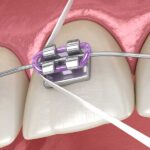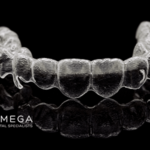What Is Apical Scarring?

Apical scarring is a common dental condition, though many people do not hear about it until it affects them. Understanding what an apical scar is and where it comes from can help those dealing with symptoms. Truth be told, many occurrences of apical scars are asymptomatic and are only discovered on x-rays during regular dental exams.
Table of Contents
What is an Apical Scar?
As is common with most surgical or endodontic procedures, scars form as the body begins to heal itself. An apical scar is a scar that has formed at the tip, or apex, of a tooth’s root and is comprised of dense connective tissue. Sometimes the body overreacts and sends more tissue than is needed to heal a certain sized space, so a scar is left behind that is thicker than normal. People are unaware an apical scar has formed unless it is accompanied by an infection.
X-rays may not even paint a crystal clear picture of when the scarring occurred. It can be difficult to tell if the apical lesion was present in the root canal, or if it is truly a sign of a failing root canal. This confusion can be relieved if there are X-rays from before the procedure to use for comparison. If the apical scar shows no signs of changing over time, re-treatment or surgery may not be necessary.
What Causes Apical Scarring?
An apical scar is caused by the body’s exuberant attempt at healing itself after a root canal or similar endodontic procedure. For some reason, regulation of the connective tissue comes to a halt and dense fibrous tissue forms at the apex of filled root canals. Because of this overabundance of dense fibrous tissue, a patient may be able to feel the scar on their tooth.
Can Apical Scars Be Dangerous?
Apical scars are not usually dangerous. Most people experience no symptoms or pain when a simple apical scar is present. Dental exams are important to track the progress of apical scars so x-rays can be compared over time to ensure both patient and dental providers that no concerning changes have taken place. Depending on the size of the scar, it can be confused with cysts or granulomas. A biopsy may be necessary to rule out a more serious condition.
Keep in mind, once a tooth undergoes a root canal, it is considered a “dead” tooth. Danger rarely comes from an apical scar, but rather what may be hiding out with the apical scarring. A failed root canal may present with intra-radicular or extra-radicular infection or a periapical cyst. Most endodontists will do what is in their power to save the natural tooth by re-treating the tooth to remove excess tissue and infection.
What Are Common Treatments for Apical Scarring?
If the apical scar is visible, the first line of treatments available can remove the scar. Re-treating the root canal is a possible solution. In this case, the dentist drills through the crown of the previously treated tooth and cleans up any excess tissue. An apicoectomy may be the next step in the sequence. This involves removing the apex of the root and then possibly filling it with a special retrograde filling. Extraction is the last resort and will only happen if there is no feasible way to save the tooth.
If an X-ray has revealed the presence of an apical scar, it is best to discuss options with the dentist or endodontist. No treatment may be necessary beyond monitoring the scar for change over time. It is best to let the dental professional determine that the apical scar is benign and is not a more serious condition in need of treatment.
-
February 15, 2023What Is The Average Cost Of Braces In Houston?
-
February 01, 2023What You Need to Know About Dental Hygienists?
-
January 30, 2023What to Expect During the Wisdom Teeth Extraction
-
October 23, 2022Wisdom Tooth Removal Cost
-
October 23, 2022Dental Emergency, Open Saturday
-
October 23, 2022Full Guide to Dental Crown
-
July 26, 2022Should I Have My Wisdom Teeth Removed Before I Get Braces?
-
July 26, 2022Complete Guide to Wisdom Tooth Removal




